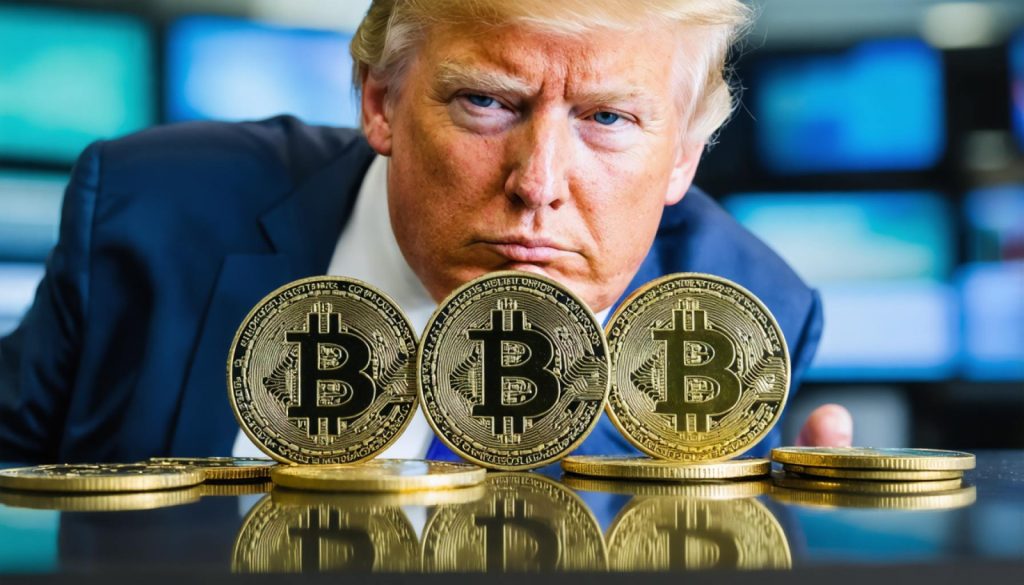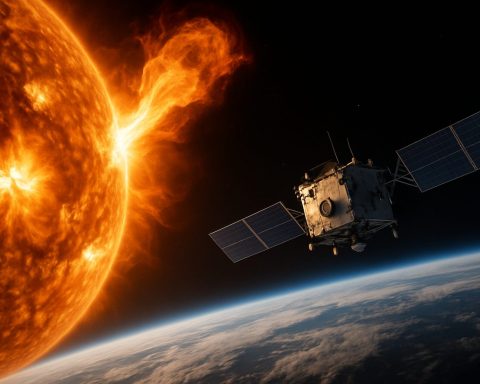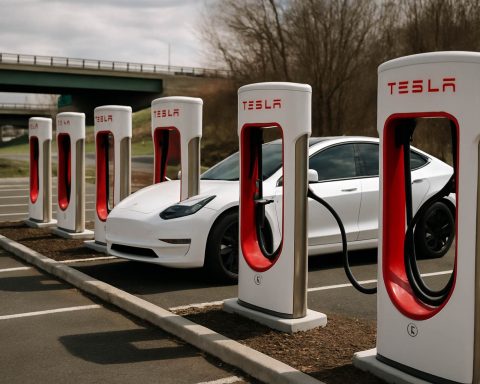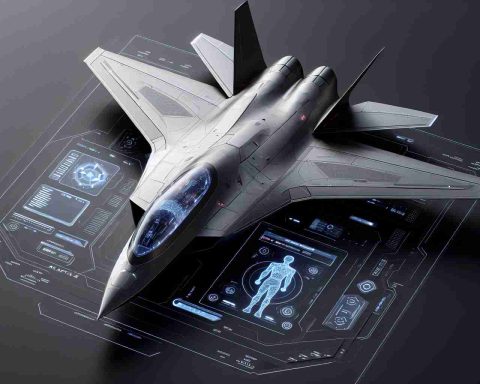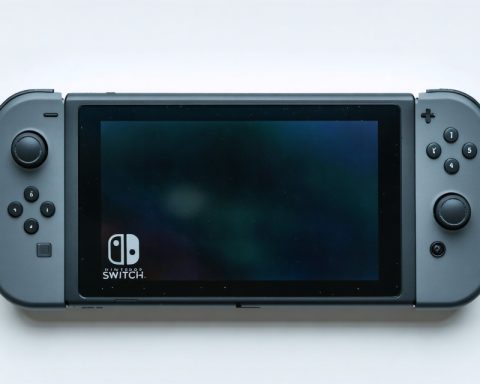- Nintendo has delayed preorders for the Switch 2 console due to new tariffs affecting manufacturing costs in Vietnam and Cambodia.
- New tariffs could increase import costs by up to 49%, potentially raising the Switch 2 price from $449.99 to $660 if transferred to consumers.
- Preorders set for April 9, 2025, have been postponed, but the launch remains on track for June 5, 2025.
- Nintendo is assessing options to handle the increased costs, amid consumer concerns over price hikes for both the console and its accessories.
- The situation highlights the impact of global policy on tech industries and underscores the need for adaptability.
A storm brews on the horizon for gaming enthusiasts as Nintendo navigates turbulent waters, delaying preorders for its highly anticipated Switch 2 console. The culprit? A fresh barrage of tariffs, courtesy of a sweeping policy change from the Trump administration, threatens to send ripples through the industry and gamers’ wallets alike.
Set against the vibrant backdrop of a seemingly ever-expanding global market for gaming, Nintendo faces a stark reality check with tariffs preparing to pounce on imports from key manufacturing strongholds in Vietnam and Cambodia. These new tariffs could soar as high as 46% and 49% respectively, potentially catapulting the Switch 2’s price from a hefty $449.99 to a wallet-draining $660 if the costs are passed directly to consumers.
For fans eagerly awaiting the chance to secure their own piece of Nintendo’s latest innovation, this delay lands on an already fraught landscape of soaring production costs and consumer weariness. With preorders initially slated for April 9, 2025, coinciding neatly with the rollout of the tariffs, Nintendo has pressed pause, attempting to reassess the fiscal terrain and soothe anxious fans with promises of revised timelines.
Despite the murky forecast, Nintendo remains steady in its projections, with the launch date securely anchored to June 5, 2025. Yet, shadows of uncertainty lurk, not only for the console itself but for its accessories, as the prospect of marked-up prices becomes more than just a whispered rumor. Consumers, already apprehensive at the $449 price point—particularly in light of the original Switch’s $299 debut—have voiced discontent across platforms. Eager aficionados bombard streams and forums with pleas to curb what they perceive as potential price-gouging, especially when considering the premium pricing on games like the anticipated “Mario Kart World.”
Amid whispers and countless speculative threads, one thing is crystal clear: Nintendo stands at a pivotal crossroads. The decision to absorb or transfer the tariff-induced financial burden could redefine consumer loyalty and set a precedent for the tech industry at large.
This situation serves as a poignant reminder of the delicate interplay between global policy shifts and consumer electronics. It underscores a vital takeaway for gamers and companies alike—the necessity of adaptability in an era where international politics and manufacturing logistics can sway economies and dictate the future of beloved pastimes. As Nintendo charts its course, the coming months promise to reveal whether it can maintain its storied legacy of affordable gaming amid shifting sands.
Nintendo’s Dilemma: Will Tariffs Derail the Switch 2 Launch?
Navigating the Storm: Nintendo’s Challenge with the Switch 2
Nintendo is in the spotlight, grappling with unpredictable tariffs imposed by a U.S. policy shift affecting imports from Vietnam and Cambodia. These tariffs, potentially as high as 46% to 49%, could skyrocket the price of the much-anticipated Switch 2 from $449.99 to $660. This is a significant increase compared to the original Switch’s introductory price of $299.
Real-World Use Cases and Implications
The video game industry heavily relies on global supply chains and international manufacturing, often in countries like Vietnam and Cambodia. The new tariffs illustrate the dependency on these regions and highlight the vulnerability of electronics manufacturers to political and economic shifts.
For consumers, the increased prices may deter potential buyers, leading them to consider alternative gaming systems or platforms. Companies like Sony and Microsoft, competitors with less exposure to these regions, might benefit if they can maintain competitive pricing.
Market Forecasts & Industry Trends
The video game console market is projected to grow, but unexpected economic shifts can alter these forecasts. If Nintendo passes these costs onto consumers, it could see a substantial reduction in its projected market share. This situation underscores the growing trend of tech companies needing to reassess their reliance on specific manufacturing hubs.
Reviews and Comparisons
At $660, the Switch 2 enters into a pricing bracket with high-performance consoles like the PS5 and Xbox Series X. These consoles offer advanced features like 4K gaming and expansive online services, posing a significant challenge for the Switch 2 unless it brings substantial hardware advancements and exclusive titles.
Pros & Cons Overview
Pros:
– Innovative Gameplay: The Switch 2 promises to build on Nintendo’s traditional models with compelling game experiences.
– Expansive Game Library: Nintendo offers a unique library that includes iconic franchises like Mario and Zelda.
Cons:
– High Price Point: Potential tariff impacts could make the console prohibitively expensive.
– Uncertain Accessory Costs: Any price hikes could extend to accessories and peripherals critical for full gaming experiences.
Controversies & Limitations
A primary controversy revolves around potential “price-gouging” perceptions by consumers if Nintendo chooses to pass the increased costs onto them. Additionally, there are concerns regarding whether future consoles will face similar issues, questioning the sustainability of current manufacturing practices.
Insights & Predictions
Nintendo’s decision on whether to absorb or transfer the tariff costs could serve as a benchmark for other companies facing similar dilemmas. Its choice will likely affect consumer loyalty and its position in the global market. Industry players will be closely watching this scenario to inform their strategies amidst ongoing global supply chain challenges.
Actionable Recommendations
1. Stay Informed: Keep up with the latest Nintendo news and tariffs situation to time your purchase smartly.
2. Explore Alternatives: If price is a concern, consider other consoles or cloud-based gaming options that fit your budget and interests.
3. Preorder Strategically: Watch for limited-time deals or packages when Nintendo announces new preorder timelines.
4. Financial Planning: Set aside a gaming budget to absorb any potential price increase when the Switch 2 officially launches.
For more information on Nintendo and their offerings, visit the official Nintendo website where gamers can explore current products and updates.

